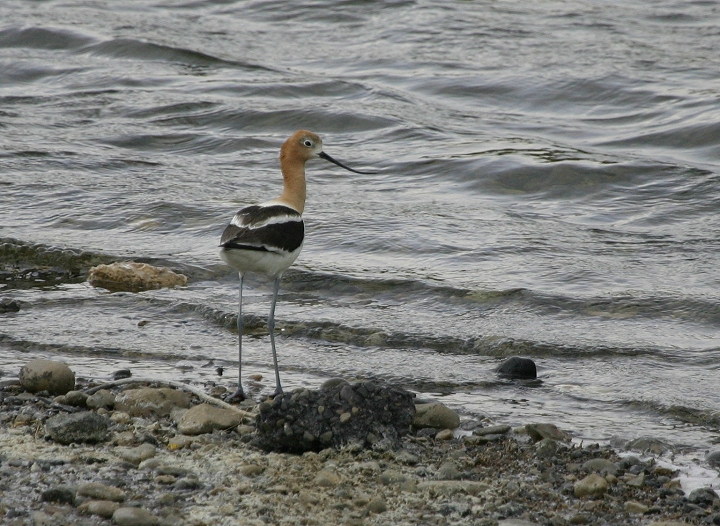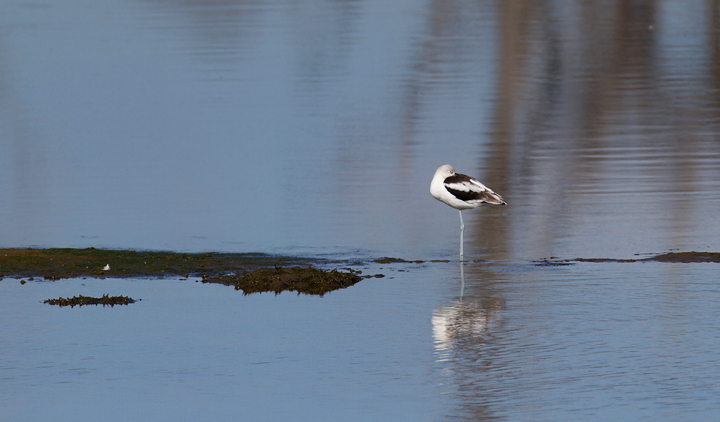American Avocet (Recurvirostra americana)

Above and below: An American Avocet at the Salton Sea, California (10/9/2011).



Below: American Avocet on Hart-Miller Island, Baltimore Co., Maryland (7/23/2005).

Below: One of five American Avocets found at Blackwater NWR, Dorchester Co., Maryland on 11/3/2007. This species is surprisingly difficult to find in Maryland away from key sites such as Hart-Miller Island.


Below: Photographed near the Great Salt Lake in Utah (6/21/2005).

Below: A roosting American Avocet at Bolsa Chica, California (10/6/2011).

Comments: This unique species is easily identified by its striking plumage, long legs, and long upturned bill. It breeds in wetlands throughout the Great Plains and southern Pacific Coast, including isolated patches of wetlands in arid regions. Most avocets winter in Mexico, but some also winter in Florida, along the Gulf of Mexico, and occasionally on the Atlantic Coast north to Virginia. There are also nonmigratory populations in coastal California, southern Texas, and Mexico. A small breeding colony in southern New Jersey persisted into the 19th century, but was hunted to near extirpation. With complete protection now, annual numbers seem to be increasing, and hopefully they will return to the Atlantic Coast as breeders in the future.
During fall migration, individuals and small flocks regularly stray to the Atlantic Coast. Here in Maryland, they are uncommon but regular late summer and fall visitors.
They are most often found on mudflats or in shallow water feeding on insects and crustaceans, often using the specialized side-to-side sweeping motion for which their bills have evolved. Above birds are shown in breeding plumage, but in nonbreeding birds, grayish white replaces the rusty orange coloration. Although there are three other species of avocet worldwide (i.e., Andean, Eurasian or Pied, and Red-necked), the closest relative of this species in North America is the Black-necked Stilt.
